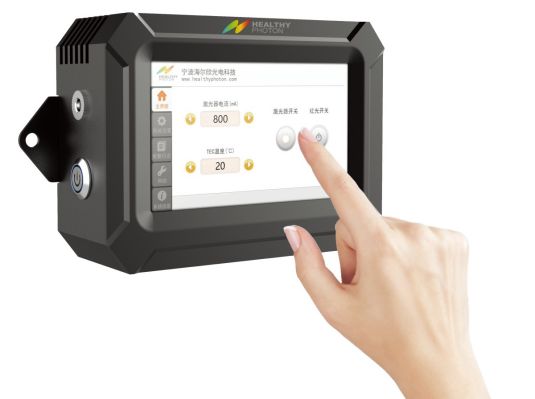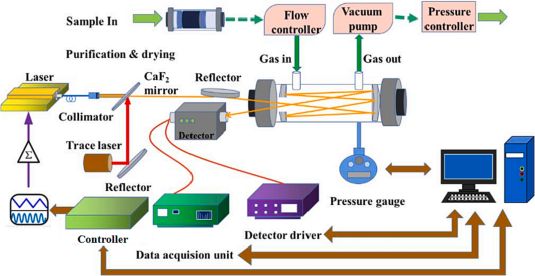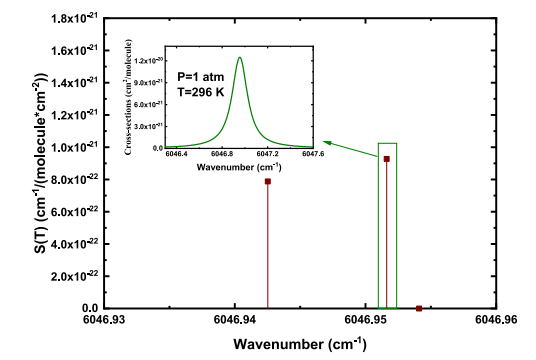 Home - TDLAS modules - Applications - Application Case :Pressure calibration- and profile fitting-free spectroscopy technology based on deep neural network for gas sensing
Home - TDLAS modules - Applications - Application Case :Pressure calibration- and profile fitting-free spectroscopy technology based on deep neural network for gas sensing Recently, the research team from Associate Professor Zhou Sheng's from Anhui University published an academic papers Pressure calibration- and profile fitting-free spectroscopy technology based on deep neural network for gas sensing.
Methane (CH4), which is the main component of natural gas, is widely used as fuel in industrial production and daily life. In addition, CH4 is an important greenhouse gas whose concentration has a substantial influence on global climate. Therefore, the measurement of CH4 has significant importance for environmental monitoring, biomedicine, and energy research. The gas concentrations are commonly measured by various trace gas sensors, such as gas chromatographs, semiconductor gas sensors, and electrochemical devices. The semiconductor gas sensors have a sensitivity of ppm level under a suitable operating environment. The laser absorption spectroscopy, which has the advantages of high selectivity, high sensitivity, and fast and multi-component monitoring, is currently widely used in the detection of a variety of gases. Laser absorption spectroscopy technology can accurately measure the characteristic absorption lines of gas molecules and effectively reduce the interference of other gas spectral lines based on the tunable lasers. Moreover, it provides the possibility of real-time in-situ gas detection, which is crucial for understanding and monitoring a variety of phenomena from industrial processes to environmental change. A gas molecule can be effectively identified by its fingerprint absorption spectrum, including typical so-called “self-broadening” parameters and “air-broadening” parameters. The spectral line parameters are functions of pressure and temperature. The accuracy of concentration measurement depends on pressure stability and spectral fitting accuracy. For quantitative spectral analysis, the spectra are traditionally fitted by an accurate model, while the pressure and temperature must be calibrated on time, especially in the case of relatively large environmental fluctuations. Consequently, the complexity of system is increased to achieve the required accuracy.
Currently, the rapid development of artificial intelligence provides a new way to solve this problem. The artificial neural network has been used for gas identification and shows a good performance under the condition of sufficient data for training. The infrared spectra of five similar alcohols has been identified by a neural network based on the Hopfield self-associative memory algorithm . A back propagation neural network is used to recognize target gas from the mixtures of gases, which proved that the convolutional neural networks (CNN) model can improve identification accuracy effectively. In addition, recent studies indicate that deep neural networks can also be applied to vibrational spectral analysis. The convolutional neural and auto encoder networks are used to process onedimensional vibrational spectroscopic data. Compared with traditional gas detection technology, the gas sensors assisted with deep learning can achieve accurate sensitivity measurement and reduce the robustness of anomaly detection.
A deep neural network (DNN), which can learn features directly from the absorption spectra after training with sufficient samples, achieves the direct identification of gas concentration free of pressure calibration and profile fitting. This network provides a new way to retrieve gas concentrations without expensive and complicated pressure controllers. To demonstrate the performance of proposed DNN assisted algorithm, a DFB diode laser-based gas sensor system for CH4 detection is constructed. The predicted concentrations are in good agreement with the calibrated values. This study indicates that DNN-based laser absorption spectroscopy has remarkable potential in atmospheric environmental monitoring, exhaled breath detection and etc..
Experimental setup
The experimental setup used to obtain CH4 gas absorption spectra is depicted in Fig. 1. A near-infrared DFB diode laser with a maximum peak output power of 20 mW is used as the optical source. The laser can be tuned from 6045 cm− 1 to 6047 cm− 1 by controlling the laser temperature and current via the controller (QC-1000, Healthy photon Co., Ltd.). The absorption line of selected CH4 near 6046.95 cm− 1 is simulated based on spectral line parameters obtained from the HITRAN database in Fig. 2. The DFB diode laser is collimated by a fiber collimator and aligned by a CaF2 beam splitter with a beam of visible red light (632.8 nm) as the tracking laser. Subsequently, the beam is sent to a multi-pass cell with a 7 m effective optical length, and the pressure inside the cell is collaborative controlled by a pressure controller, a flow controller, and a diaphragm pump. A triangular wave with a typical frequency of 100 Hz is used as a scanning signal to drive the diode laser. Finally, the laser is detected through an InGaAs photodetector and acquired by a data acquisition unit card. The signal is subsequently transmitted to the computer and analyzed by the homemade LabVIEW program.

QC-1000, Healthy photon Co., Ltd.

Fig. 1. Experimental device diagram.

Fig. 2. The spectral line intensities of CH4 in the tuning range of 6046.93–6046.96 cm− 1 and the cross-section of the selected line obtained from the HITRAN database.
Conclusions
Overall, a proof-of-concept gas sensor based on the DNN algorithm and laser absorption spectroscopy is developed, and a CH4 detection sensor system based on the DFB diode laser is designed in this paper. In
addition, the performance of the DNN algorithm is evaluated by calculating RMSE and training times, and the parameters, which include DNN layers, neuron number, and epochs, are optimized to obtain optimal parameters. The modified system is proposed to analyze and predict the gas absorption spectrum data, demonstrating good accuracy and stability in the prediction of CH4 concentrations. The predicted values of methane with different concentrations are linearly fitted with the corresponding theoretical value, which proves it has great potential in practical field applications, especially for harsh environments.
References
Pressure calibration- and profile fitting-free spectroscopy technology based on deep neural network for gas sensing, Measurement 204 (2022) 112077
 Tel:+86-400 961 6990 Email:info@healthyphoton.com
Add:Room 305, Building 1, Zhongchuang Science Park, Jinyuan Road, Panhuo Street, Yinzhou District, Ningbo City,China
Tel:+86-400 961 6990 Email:info@healthyphoton.com
Add:Room 305, Building 1, Zhongchuang Science Park, Jinyuan Road, Panhuo Street, Yinzhou District, Ningbo City,China


